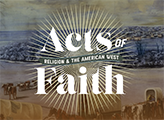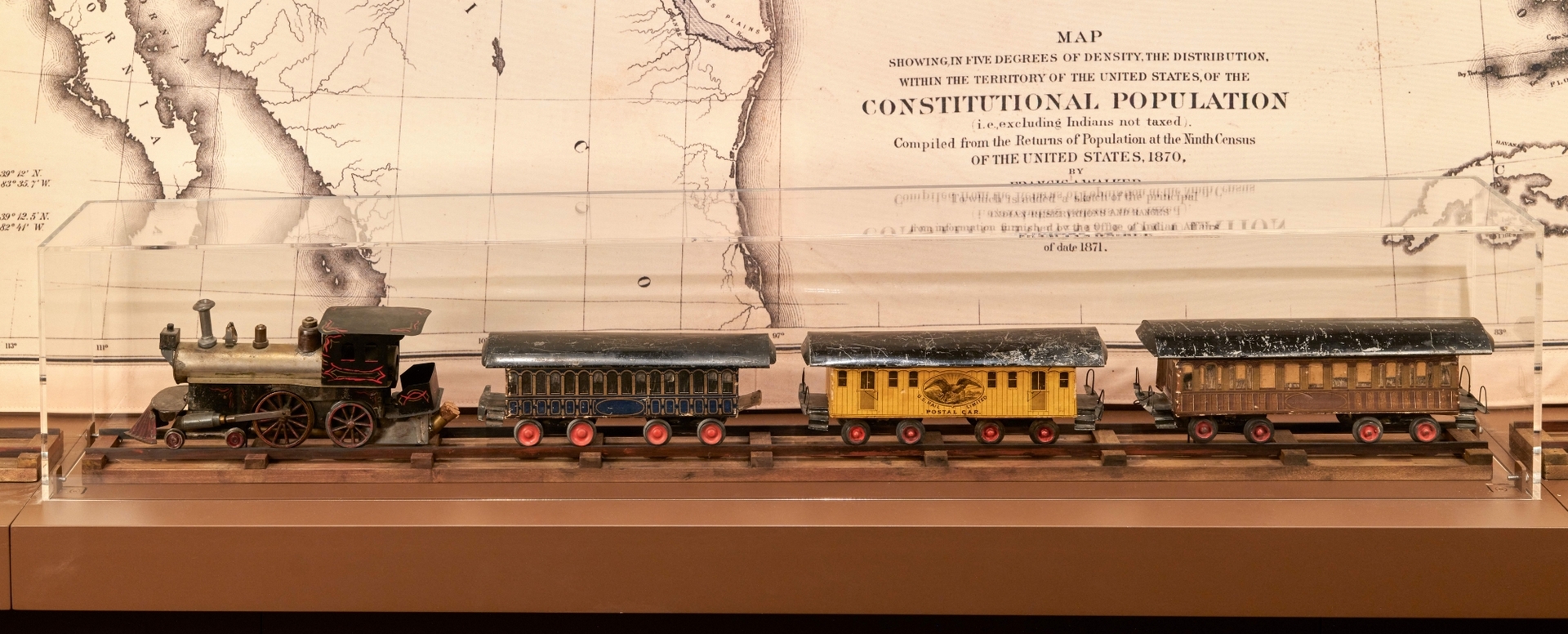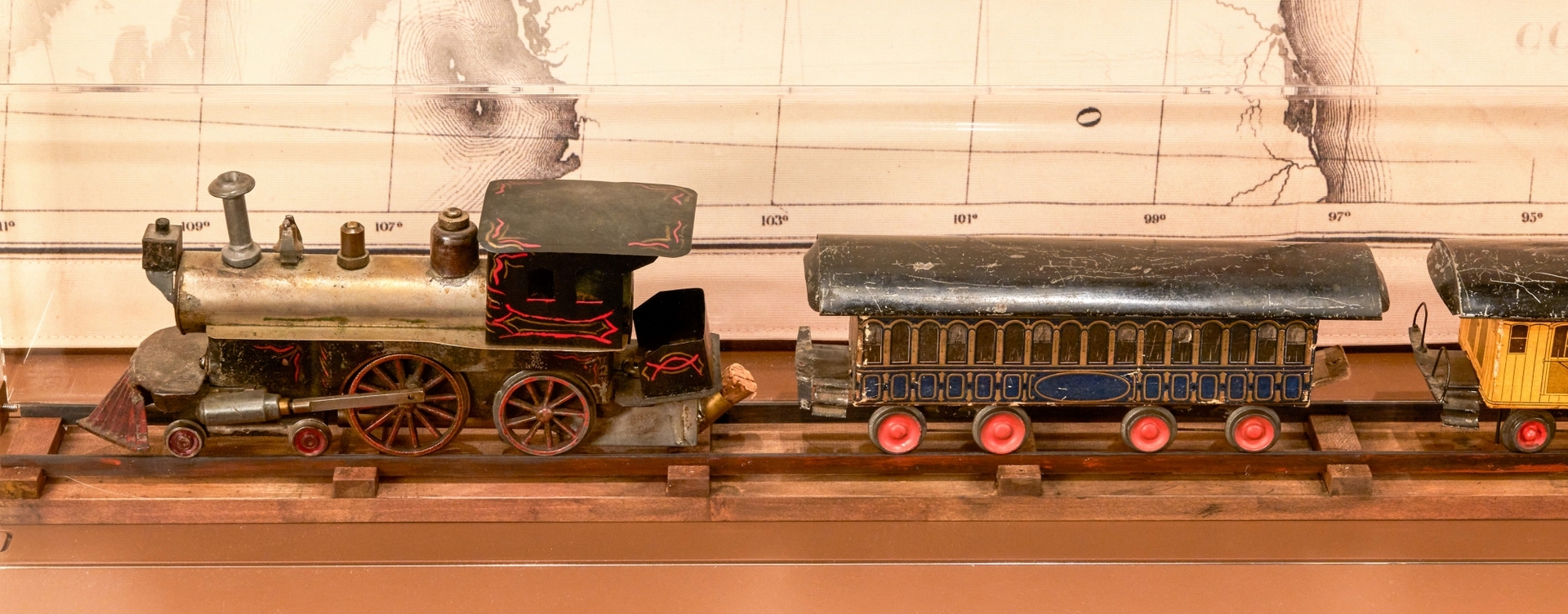




Railroad Workers
The transcontinental railroad,
completed in 1869, linked the eastern seaboard to the Pacific Ocean.
The
Central Pacific Railroad Company recruited roughly 15,000 Chinese laborers to
build the railroad’s western leg.

Crossing Mountains
To build the transcontinental
railroad across the Sierra Nevada Mountains, the largely Chinese workforce set
explosives, bore tunnels, and labored at precarious heights. Over 1,000 workers
died while performing these dangerous tasks.

Beggs
Locomotive and train cars, late 19th century
New-York Historical Society, The Jerni Collection
Representing the US in Art
After the Civil War, Congress
funded multiple scientific surveys of western lands. Each survey generated
reams of data pertinent to the nation's economic development. But it was the
artistic products—created by photographers and artists who accompanied the
expeditions—that publicized the West for a national audience.
While surveying Colorado in
1873, photographer William Henry Jackson captured the first documentary image
of this 14,000-foot mountain in the Rockies. Its distinctive cross-shaped
snowfield had been spoken of as a Christian symbol since the time of Spanish
exploration, but few had seen it. Jackson's photograph made the Mountain of the
Holy Cross a familiar icon.
Jackson’s photograph also inspired
the western landscape painter Thomas Moran to travel to Colorado to create his
own version of this natural wonder. Moran's monumental painting went on display
in Washington, DC, in 1875, where it would have reinforced the prevailing idea
of a divinely sanctioned westward expansion.